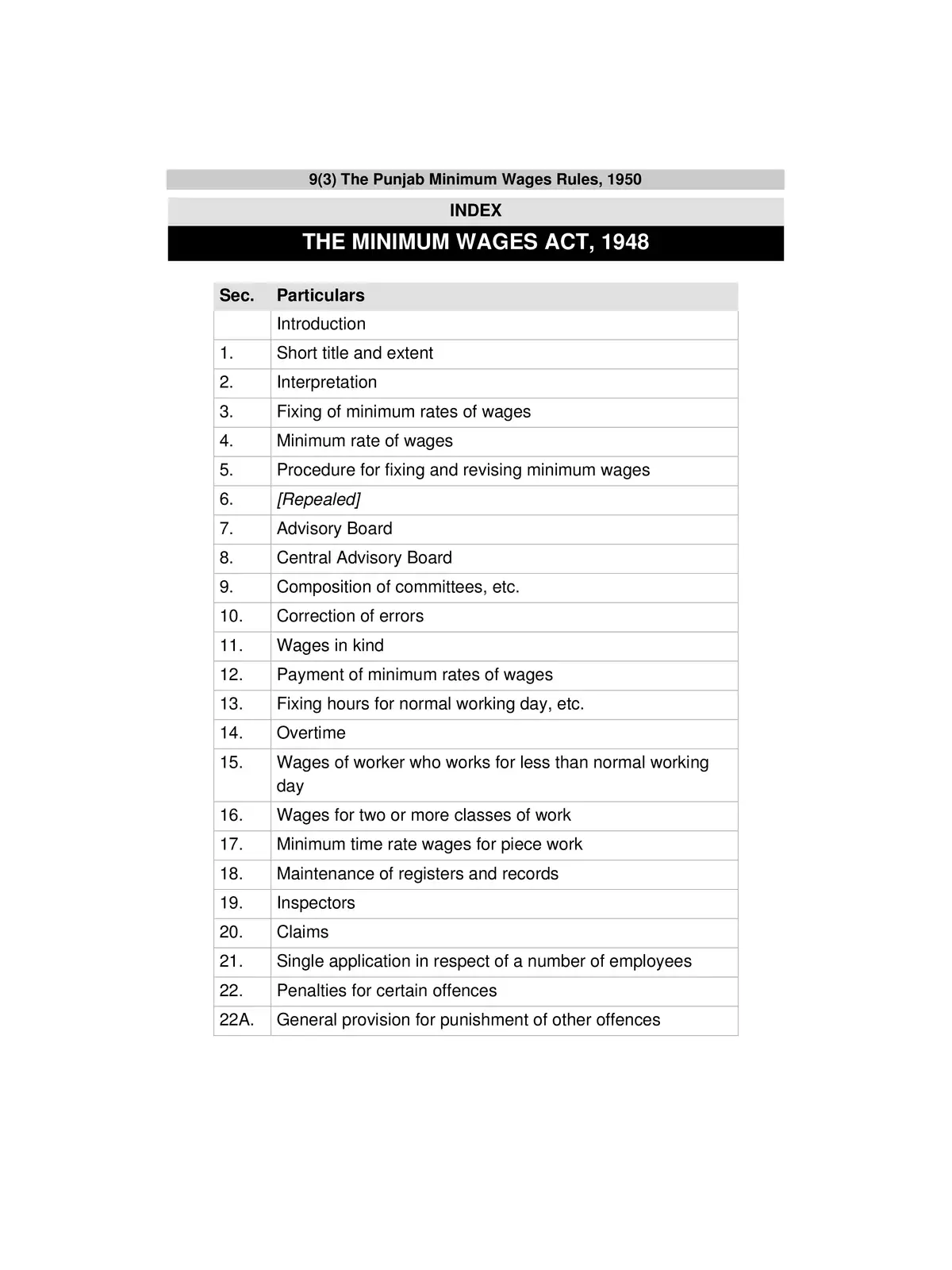Minimum Wages Act, 1948 - Summary
The Minimum Wages Act of 1948 is a crucial piece of legislation aimed at ensuring fair pay for workers in India. This Act was introduced by the Central Legislative Assembly with the primary goal of reducing wage inequality among different categories of workers within various organizations.
The Minimum Wages Act establishes minimum wage rates that apply to different kinds of jobs held by workers across India.
Fixed Up Minimum Rate Wages
According to Section 3 of the Act, the competent Government can set or modify the minimum wage rates for specified employments in the following ways:
– A base salary rate along with a special allowance, known as the “cost of living allowance,” which adjusts according to changes in the cost of living index applicable to those workers.
– A basic wage rate that may or may not include a cost-of-living allowance, along with the monetary value of any concessions like discounts on essential goods.
– An all-in rate that encompasses the basic rate, the cost of living allowance, and the monetary value of any concessions available.
Minimum Wages Act Applicability
The Minimum Wages Act applies to all employers with more than 1,000 workers in a given state. It is effective across all Indian states, except Jammu and Kashmir. However, the provisions of this Act do not cover employees of the Central Government or Railways, unless there is specific consent from the Central Government.
To gather more information about the Minimum Wages Act, 1948, you can download the PDF file from the link provided below. This PDF will offer you detailed insights into the Act and its provisions.
